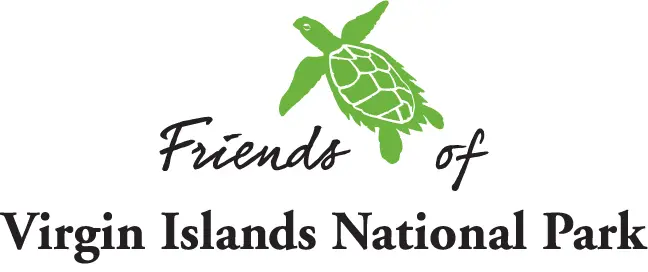Increase in volunteers bolsters support for turtle monitoring program
Virgin Islands Daily News Article By ANDREA MILAM / March 18, 2021
The coronavirus pandemic found a lot of people with more time on their hands, and for the Friends of Virgin Islands National Park-sponsored Sea Turtle Monitoring and Protection Program, this was a good thing.
“We’ve tripled our volunteer base, and because of that we were able to increase the frequency of our beach patrols as well as the number of beaches monitored,” said the program’s coordinator, Adren Anderson. “We were able to document nesting on beaches that hadn’t been documented before.”
Thirty-three nests were documented this season, which started in July 2020. Two nests were still incubating this month, which shows anecdotally that the nesting season has possibly shifted later by about a month, said Anderson.
Nest excavations, where volunteers investigate a nest cavity three to five days after the eggs have hatched, resulted in the discovery of 203 live hatchlings that were helped to the sea by volunteers. In total, more than 2,500 hatchlings made it to the sea this season. Six nest sites that were in danger of being washed out by the waves were carefully relocated.
“Those nests that would have been washed out completely were successful,” said Anderson. “You have to follow very strict guidelines. Within 12 hours of the eggs being laid, the embryo will attach to the egg wall and movement after that point could kill the embryo. We have a very specific set of parameters we have to operate under so we don’t risk jeopardizing the nest at all.”
All of the 33 nests documented this season were hawksbill turtles, including one very large hawksbill with a distinctive crawl, possibly due to a flipper deformity. Hawksbill turtles are critically endangered.
“Every nest really counts with them,” said Anderson.
One exciting event that volunteers were able to witness is a “boil,” when the hatchlings wait just below the surface of the sand for the temperature to lower, then work together to dig their way out of the nest.
“It looks like boiling water and it’s pretty incredible to see,” said Anderson. “The hatchlings are so energetic.”
The monitoring program implemented some new collaborations this year, including a partnership with the University of the Virgin Islands.
A student of Dr. Paul Jobsis, director of the university’s Center for Marine and Environmental Studies, will work with tissue samples collected by Anderson and her fellow program coordinator Willow Melamet to study genetic relatedness between nesting females on St. John and St. Thomas.
Anderson and Melamet also continued the outreach arm of the program despite the pandemic via Zoom calls with students in the classroom.
The virtual format allowed them to connect with students in the Virgin Islands like usual, as well as classes in a few landlocked states including Minnesota.
With the nesting season winding down, the program coordinators will shift their focus to spreading sea turtle conservation awareness on St. John through schools, tour operators, and signage.
Anderson said she expects training for the upcoming nesting season to begin in June, and she hopes to partner with organizations on St. Thomas to spread the Sea Turtle Monitoring and Protection Program to that island.
In the meantime, those interested in turtles can join “Turtle Talks” with Anderson and Melamet the third Friday of every month at Maho Bay. The seminar is followed by a kayak trip hosted and led by Reef2Peak.
For more information, visit https://friendsvinp.org/walks-and-talks/, and for information on the Sea Turtle Monitoring and Protection Program, email vinpturtles@gmail.com
